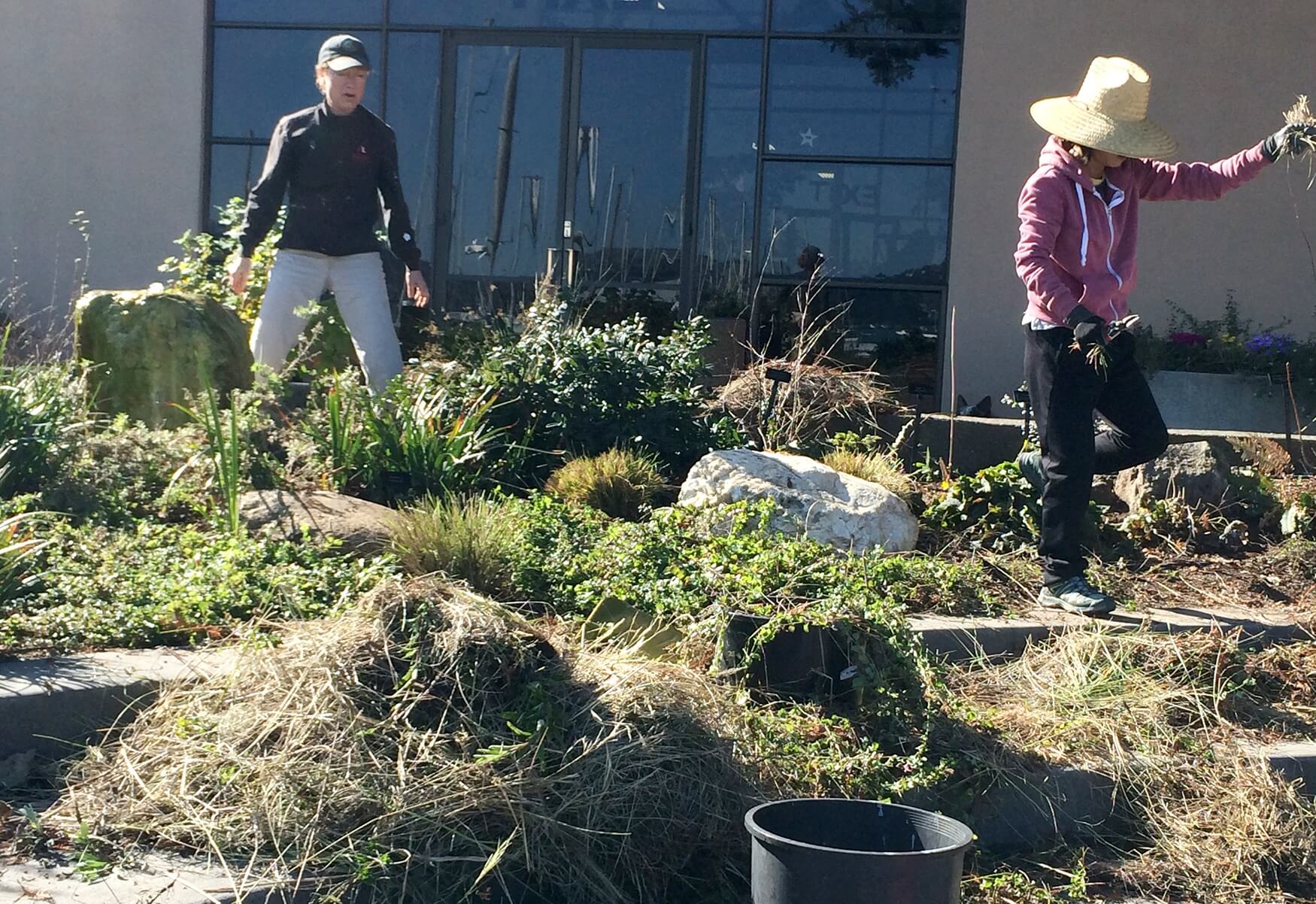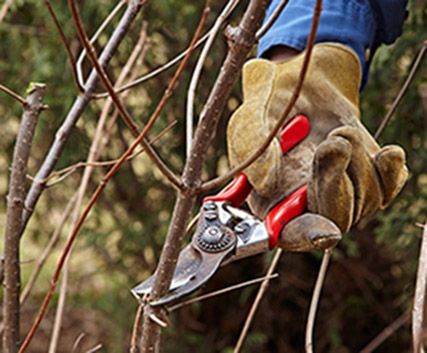Seasonal Maintenance

Late winter clean-up at one of the public gardens where we lend a hand produces a lot of clippings to add to the compost pile. Photo: Laura Lovett
As a dedicated California habitat gardener using only sustainable, organic methods, I like to think of myself as a steward of the land—steadily working to increase its fertility and biodiversity. In nature, the best and most lasting ways to create biodiversity are natural disasters of medium intensity. As the caretaker of my garden, I become a natural disaster of medium intensity!
The yearly maintenance cycle begins in the late summer as the dormant season comes to a close. Then I am the “controlled burn” that cuts back a lot of perennials, bunchgrasses, and small shrubs to encourage new growth when the rains come. In the rainy season, I could be the wind as I prune small trees and large shrubs, taking down dead twigs and branches. When making room for a new plant, I could be a gopher, disturbing the soil, bringing up nutrients from below and forcing the soil food web to restructure itself.
Garden maintenance is often more easily accomplished if the timing is just right, such as the task of cutting back herbaceous perennials and groundcovers before new growth starts. I collect wildflower seeds all during the dry season and then, in late summer, I pull the remaining growth, which usually also contains some seeds. I lay this down lightly as a “wildflower mulch” in other areas where I would like to see these ephemeral beauties take hold.
Start weeding before seeds are set, and mulch right after weeding, otherwise more weeds move in. When the garden has been cleaned up a bit, it’s time to apply a layer of compost and/or mulch; I alternate each year. All these tasks become easier each year because there is a positive cumulative effect from these efforts. One easy method of mulching is to simply leave all the prunings right where they were cut, spreading them out under the plants.
I prefer to make as much of my own mulch as possible by taking the garden trimmings, putting them through a home scale chipper/shredder, and then spreading it on my garden beds. In a garden full of life, this method tends to remain a little less messy after the ground-feeding birds have been searching for food!
Habitat gardeners need to pay special attention to certain details when doing maintenance: be on the lookout for bird nests, small animals tucked into over-wintering sites, and butterfly pupae. Bird nesting boxes should be cleaned out well before the breeding season begins, also.

